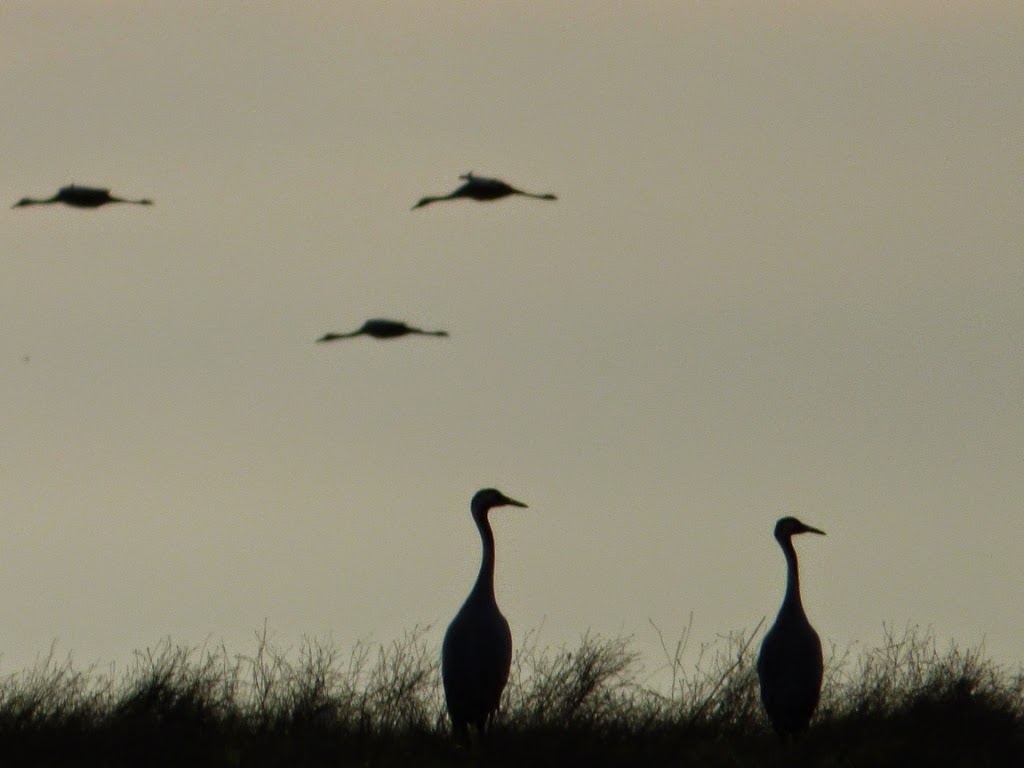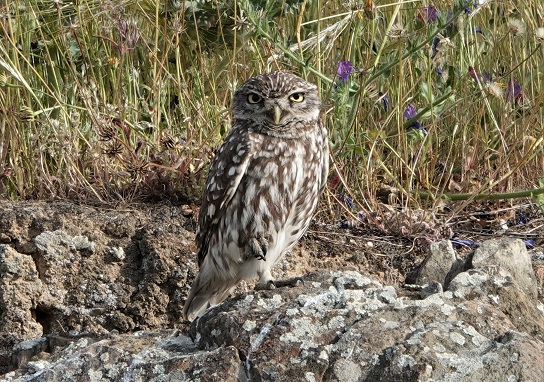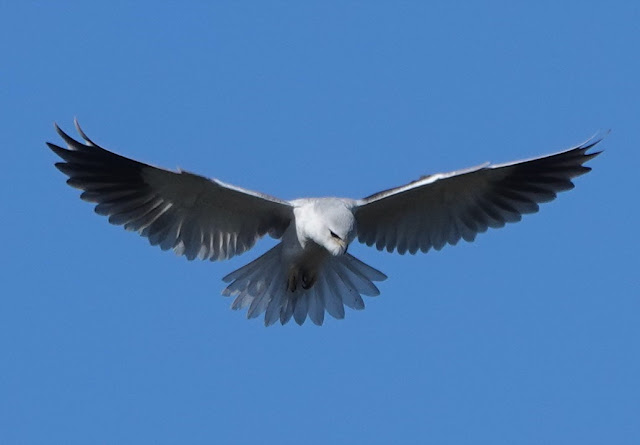Rising above the fog
 |
| Common Cranes (Martin Kelsey) |
In minutes my environment changes; colour has gone, the sky has disappeared and the temperature has plunged, even sound now is muffled. I have become wrapped in a cold and grey fog, so heavy that if I focus my eyes I can see each tiny droplet of water held as the mist, floating and gently swirling. The great land mass of Iberia with high tablelands, criss-crossed by mountain ridges and holding watersheds of large rivers, coupled with frequent long periods of settled anticyclonic weather in winter all make for perfect conditions for fog, sometimes extending over vast areas, sometimes in curiously localised banks.
The fog is more liquid than vapour, finding its level, filling up hollows, rising and falling like a tide, its defined border on the move as subtle changes happen to the air temperature as the sun takes its daily course. Where we live, on the Sierra de los Lagares, at about 600 metres above sea-level, we stand most of the time above the fog during these days of calm, without even the slightest caress of a breeze. The dawn is crisp, the outline of the Pedro Gómez mountain to the east precisely marked. As the day progresses under a cloudless sky, the temperature rises and I can be working the garden in shirtsleeves, yet down the hill in the village of Herguijuela, at just under 500 metres above sea-level, they will not see the sun all day and thick overcoats clad the people - such is the temperature inversion. Only at the ending of the day, when the fog creeps mysteriously uphill, are we pushed indoors.
The fog is striking at a crucial week. Volunteers across Extremadura, indeed across Spain, had scheduled these days for the December census of Common Cranes. Mostly the counts are done at the roosting sites, which by their nature (lagoons, lakes, reservoirs, flooded fields) will be in the hollows and lower altitudes susceptible to these conditions. At my regular site, a small old reservoir set amongst dehesa, the cranes arrive from their daytime feeding sites during the last minutes of daylight, settling in amongst the trees and then making the final part of the evening journey on foot to reach the shore of the lake. By that time it is dusk and even under ideal conditions, they appear as little more than grey forms. With fog the count is impossible. I am also counting cranes on feeding areas at even lower altitudes on rice and maize stubble. Two days ago I left home at midday, under clear blue skies, but within minutes had descended into thick fog. I pressed on since when in its midst, it is impossible to gauge its extent. As it happened, as I dropped height further the fog lessened: it was lying bound by contours and fortunately my counting area lay just below this plane. The light however was murky and my higher vantage points were being brushed by the fog, and I struggled to complete the count, recording 8,700 birds.
The same morning, I fitted in my December winter birds survey (which had been impossible the day before because of the fog). This takes me on a circuit of the Sierra de los Lagares, on one of my favourite walks. Along a small lane through old olive groves and patches of evergreen oak, I note every bird I see and hear on eight fifteen-minute segments - two hours of concentration. The exercise is repeated in January and the results from my survey, along with those of hundreds across the country are all then compiled and analysed. On its own each result does not tell us much, but over the years and from many sites, trends can be detected. On this particular day, my total was 640 birds of 34 species recorded, of which Blackcaps were the most numerous with 106 individuals. These are mainly of Central European origin, enjoying winter in Spain feasting on olives.
 |
| Gredos Mountains at the back, Monfragüe ridge middle distance: view from Sierra de los Lagares (Martin Kelsey) |
 |
| Trujillo floating in the fog (Martin Kelsey) |



Comments